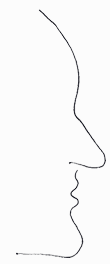|
Abstracts
Lecture 1: "The general case"
Friday, May 22, 1.15-2.15 pm
Lecture hall D2, Lindstedtsvägen 5
The celebrated Ergodic Theorems of George Birkhoff and von Neumann in the 1930's gave rise to a mathematical formulation of Boltzmann's Ergodic Hypothesis in thermodynamics. This reformulated hypothesis has been described by a variety of authors as the conjecture that ergodicity — a form of randomness of orbit distributions — should be "the general case" in conservative dynamics. I will discuss remarkable discoveries in the intervening century that show why such a hypothesis must be false in its most restrictive formulation but still survives in some contexts. In the end, I will begin to tackle the question, "When is ergodicity and other chaotic behavior the general case?"
Coffee is served between 12.45 and 1.15 outside the
lecture hall.
Lecture 2: Robust mechanisms for chaos, I: Geometry and the birth of stable ergodicity
Monday, May 25, 1.15-2.15 pm
Lecture hall E3, Osquars backe 14
The first general, robust mechanism for ergodicity was developed by E. Hopf in the 1930's in the context of Riemannian geometry. Loosely put, Hopf showed that for a negatively curved, compact surface, the "typical" infinite geodesic fills the manifold in a very uniform way, a property called equidistribution. I will discuss Hopf's basic idea in both topological and measure-theoretic settings and how it has developed into a widely applicable mechanism for chaotic behavior in smooth dynamics.
Lecture 3: Robust mechanisms for chaos, II: Stable ergodicity and partial hyperbolicity
Tuesday, May 26, 1.15-2.15 pm
Lecture hall E3, Osquars backe 14
Kolmogorov introduced in the 1950's a robust mechanism for non-ergodicity, which is now known as the KAM phenomenon (named for Kologorov, Arnol'd and Moser). A current, pressing problem in smooth dynamics is to understand the interplay between KAM and Hopf phenomena in specific classes of dynamical systems. I will describe a class of dynamical systems, called the partially hyperbolic systems, in which the two phenomena can in some sense be combined. I'll also explain recent results that give strong evidence for the truth of a modified ergodic hypothesis in this setting, known as the Pugh-Shub stable ergodicity conjecture.
About the speaker
Amie Wilkinsson was a student of Charles Pugh in Berkeley. After a period as instructor at Harvard she became professor at Northwestern University and recently moved to University of Chicago. Amie works in ergodic theory and dynamical systems and she is presently one of the leaders of the field.
She was an invited speaker at International Congress of Mathematicians in 2010 and received the Ruth Satter Prize in 2011 "for her remarkable contributions to the ergodic theory of partially hyperbolic dynamical systems," where she together with Burns solved a long-standing problem on the stability of partially hyperbolic systems in the paper On the ergodicity of partially hyperbolic systems (Ann. Math. 2010).
In addition to her outstanding work with Burns, Wilkinson has also played a central role in major developments in related areas including understanding generic behaviour of
C1-diffeomorphisms. A problem on centralizers of diffeomorphisms stated by Smale more than forty years ago was solved in a series of papers with Bonatti and Crovisier.
Apart from those already mentioned, Wilkinsons collaborators include many others, such as Masur, Viana and the recent Fields medalist Artur Avila.
Sponsored by the Göran Gustafsson Foundation
2015-05-01
|
